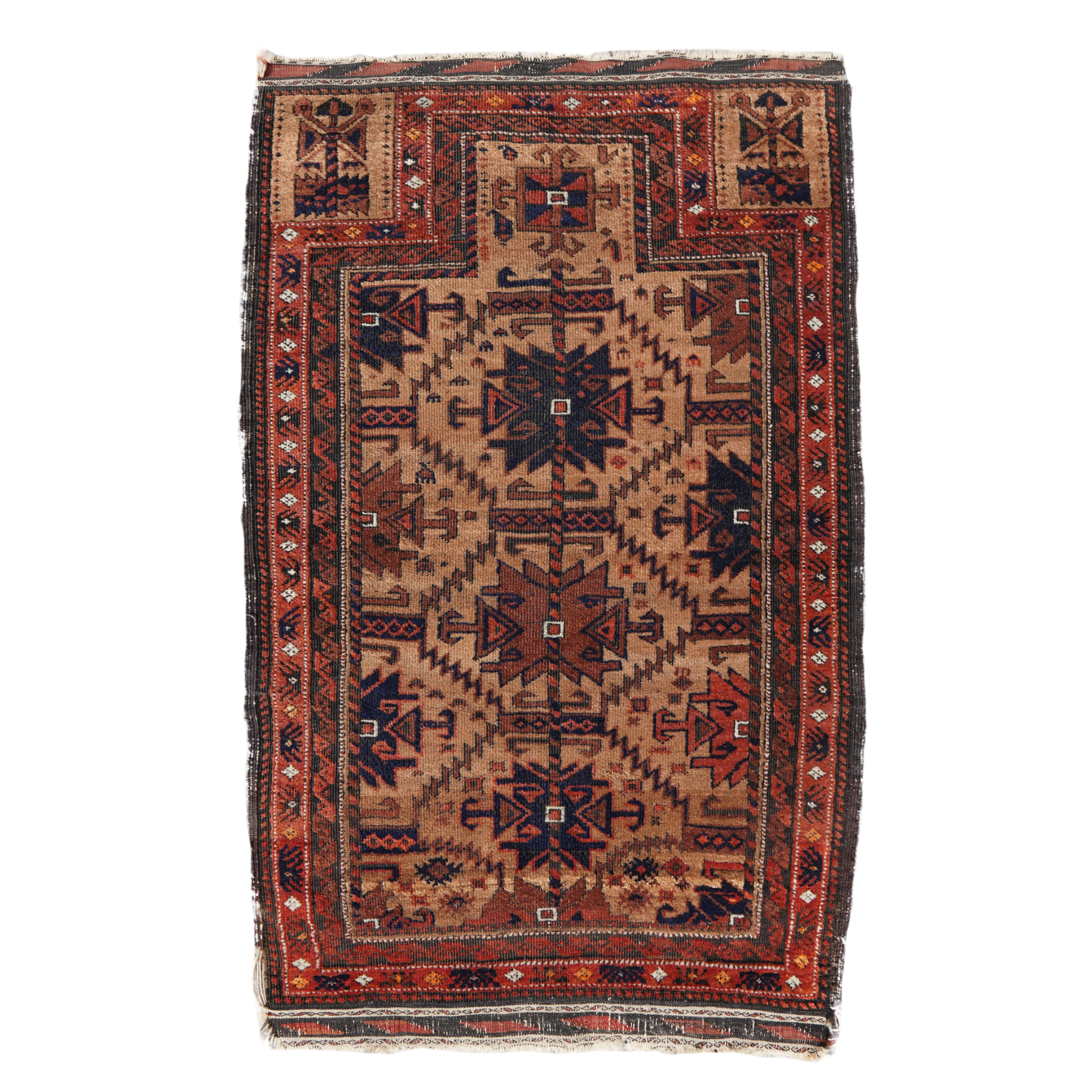 Image 1 of 9
Image 1 of 9

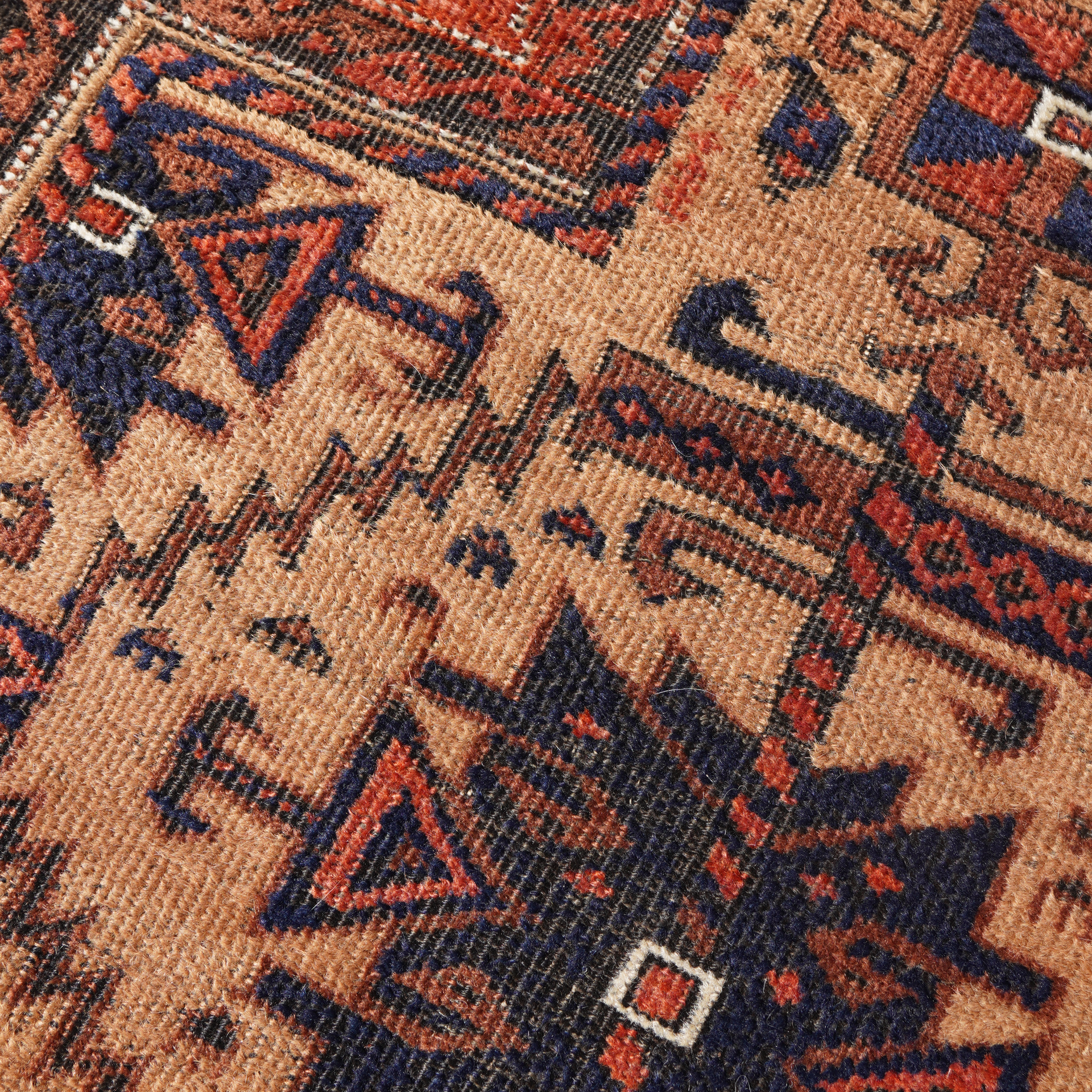 Image 2 of 9
Image 2 of 9

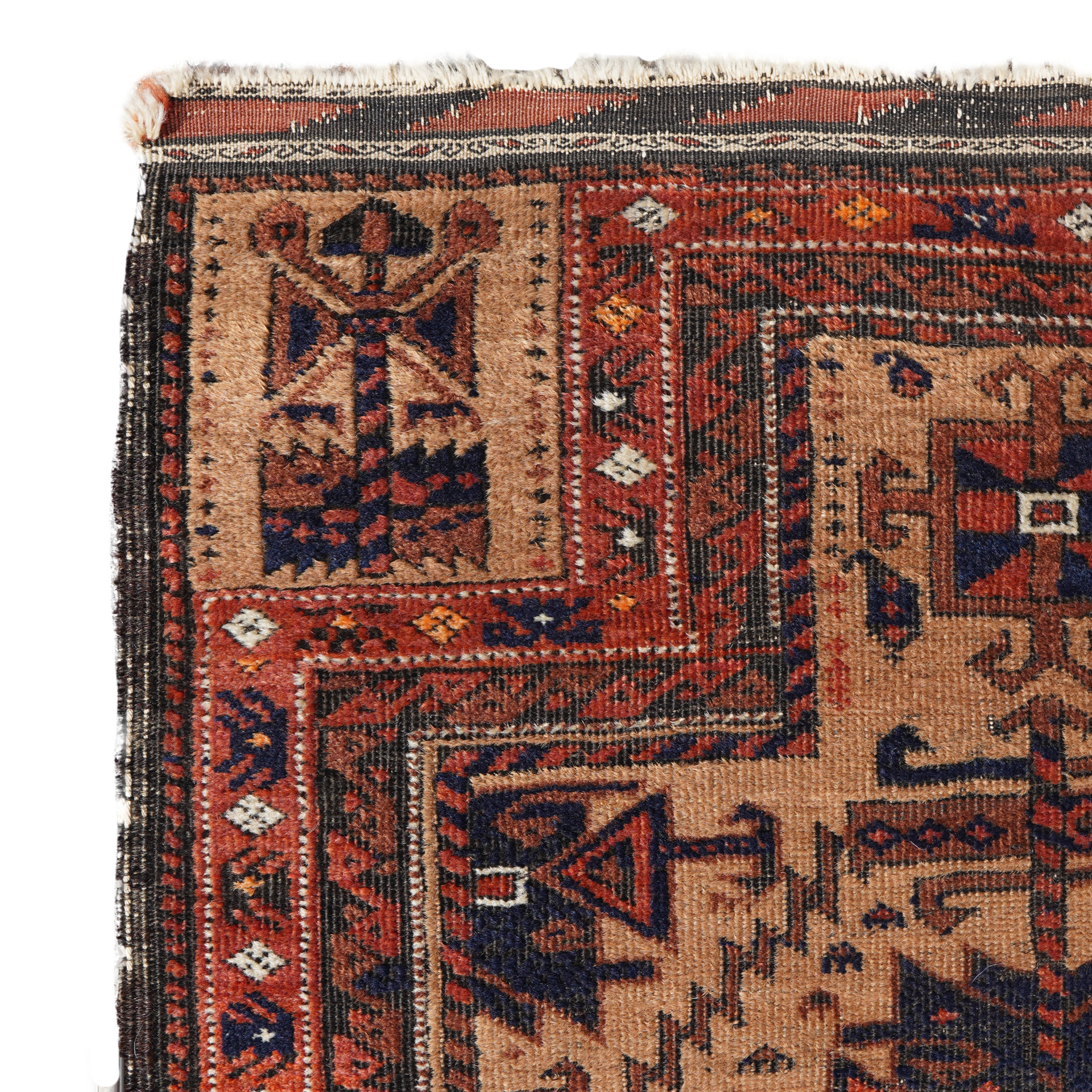 Image 3 of 9
Image 3 of 9

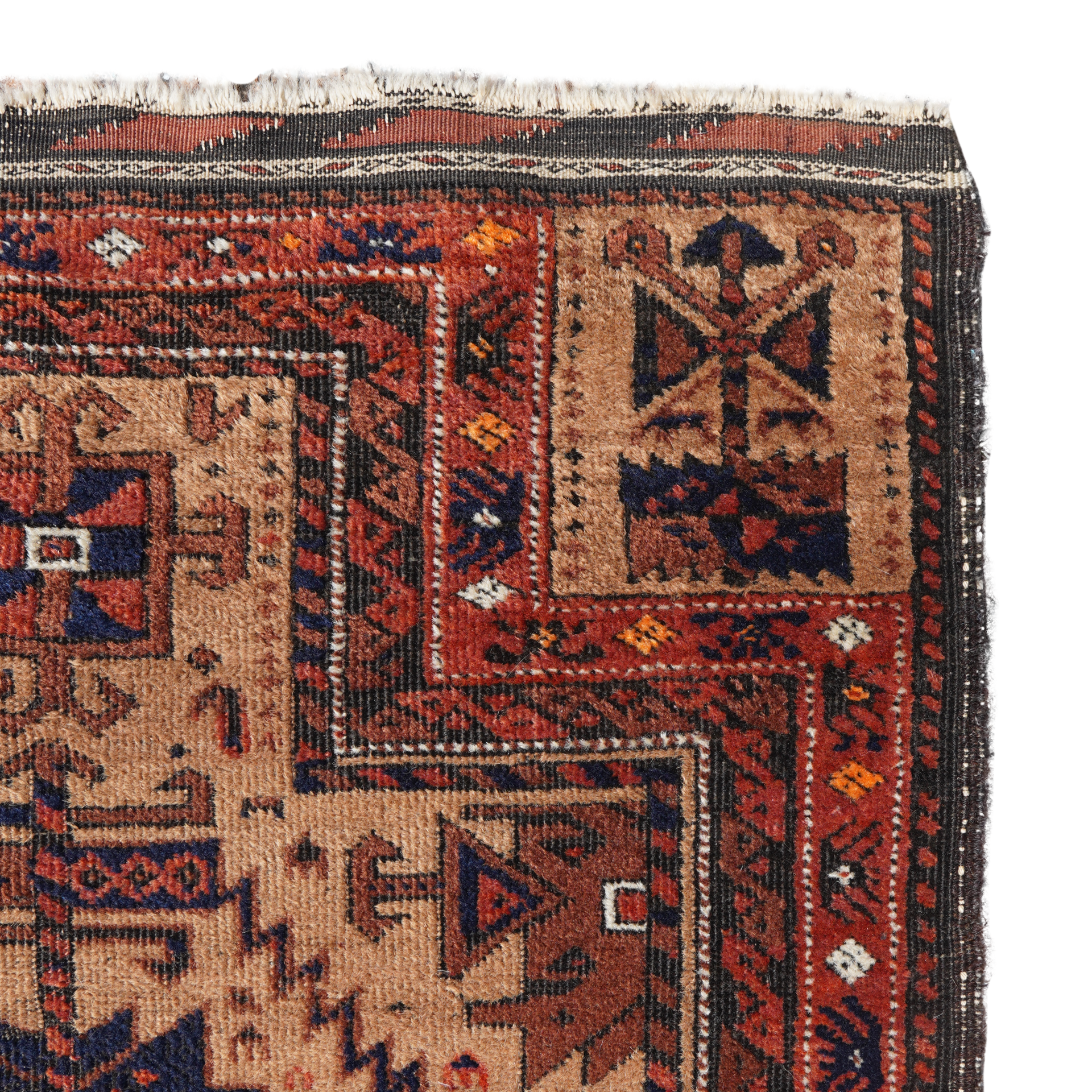 Image 4 of 9
Image 4 of 9

 Image 5 of 9
Image 5 of 9

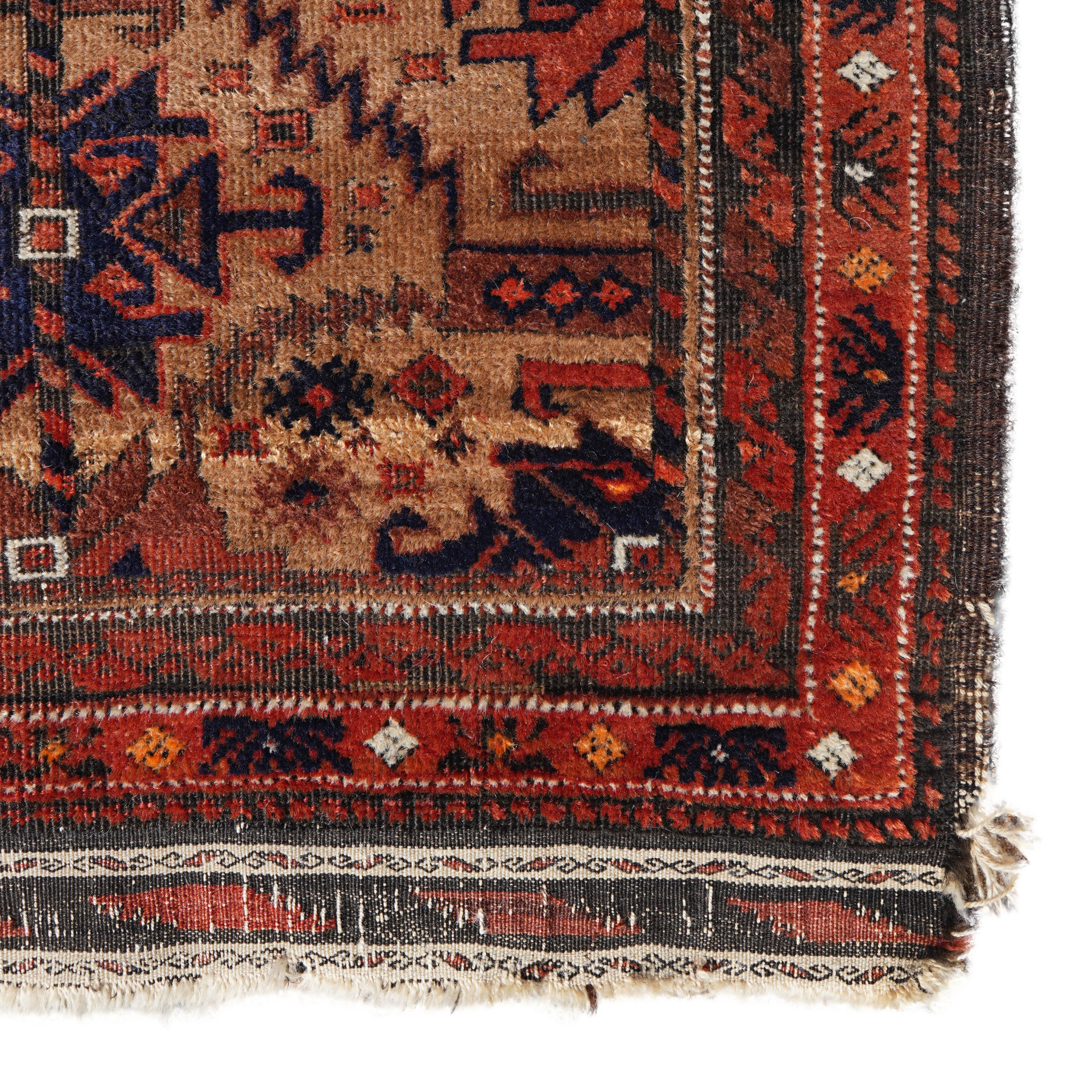 Image 6 of 9
Image 6 of 9

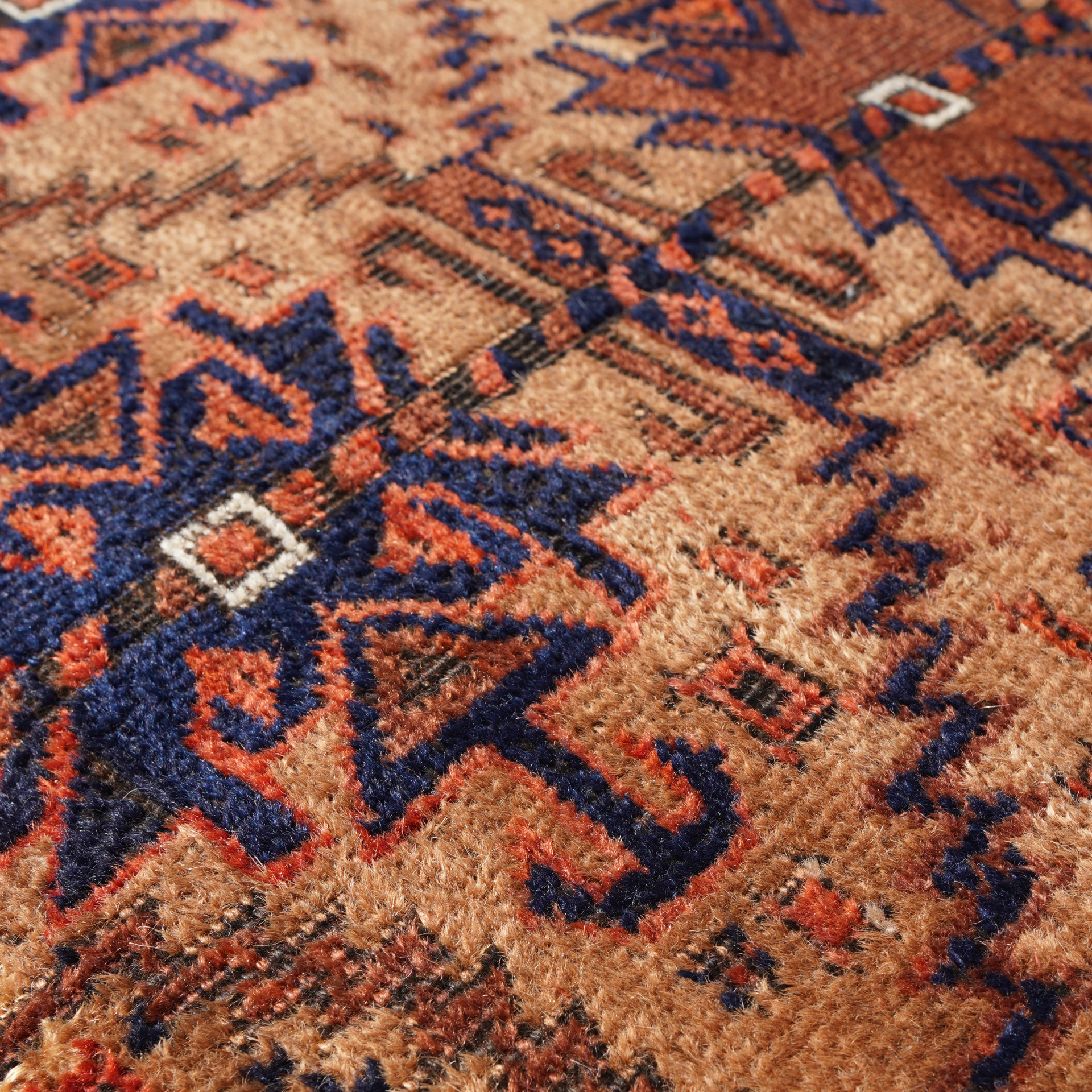 Image 7 of 9
Image 7 of 9

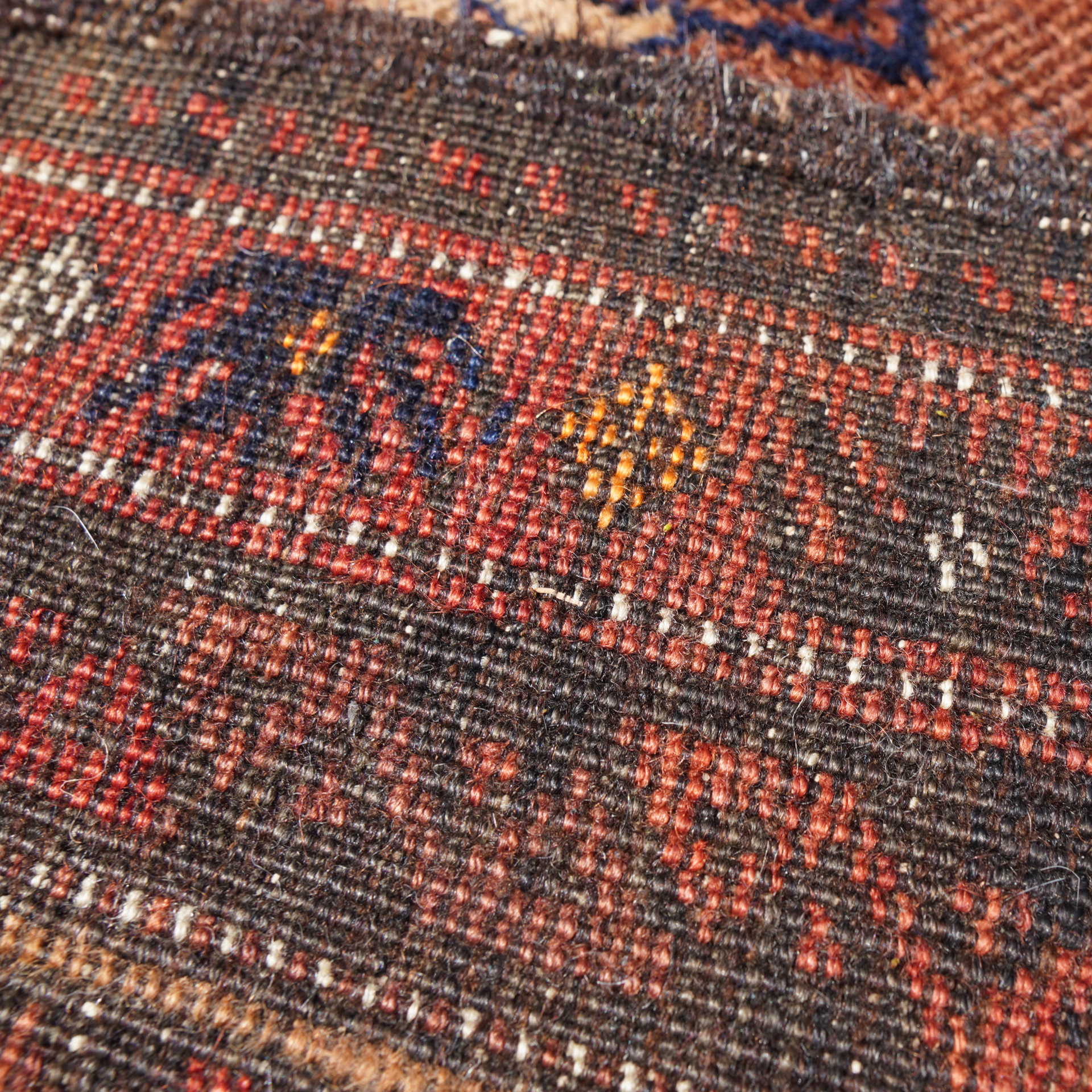 Image 8 of 9
Image 8 of 9

 Image 9 of 9
Image 9 of 9










Tribal Baluch Prayer Rug - 2’5” x 4’1”
#2524
2’-5” x 4’-1”
AGE & ORIGIN:
c. 1900
Afghanistan
OVERVIEW:
There is some consensus on the idea that many of these camel-hair field Baluch prayer rugs produced from the late 19th C. to the early 20th C. were never made to be used for their namesake, but rather as decorative items for export. While that may be the case, the creativity of the weaver can not be overstated.
There are borrowed Turkmen guls forming the main honeycomb motif of the field. Seen is possibly the Yomut gul, although potentially aspects of the Salor tribe can be seen as well. There are various touches across the field such as the awkward boteh and small ‘spaceships’ although in reality, these shapes are most likely zoomorphic in origin.
While there is much to be said about the liberties the weaver took, there is an undeniable clumsiness to her drawing that certainly adds charm. The word ‘primitive’ can certainly be a stale trade term for certain rugs, but this one absolutely fits the original intention of what that term tries to describe in good faith.
CONDITION:
Kilim end loss, some selvedge fraying and loss
#2524
2’-5” x 4’-1”
AGE & ORIGIN:
c. 1900
Afghanistan
OVERVIEW:
There is some consensus on the idea that many of these camel-hair field Baluch prayer rugs produced from the late 19th C. to the early 20th C. were never made to be used for their namesake, but rather as decorative items for export. While that may be the case, the creativity of the weaver can not be overstated.
There are borrowed Turkmen guls forming the main honeycomb motif of the field. Seen is possibly the Yomut gul, although potentially aspects of the Salor tribe can be seen as well. There are various touches across the field such as the awkward boteh and small ‘spaceships’ although in reality, these shapes are most likely zoomorphic in origin.
While there is much to be said about the liberties the weaver took, there is an undeniable clumsiness to her drawing that certainly adds charm. The word ‘primitive’ can certainly be a stale trade term for certain rugs, but this one absolutely fits the original intention of what that term tries to describe in good faith.
CONDITION:
Kilim end loss, some selvedge fraying and loss

